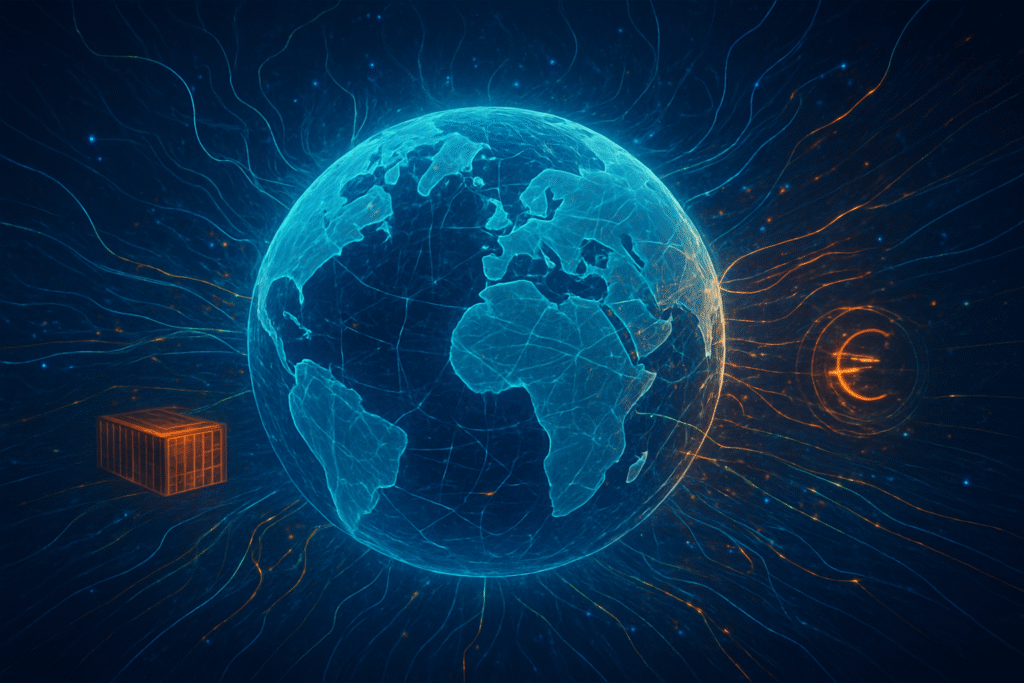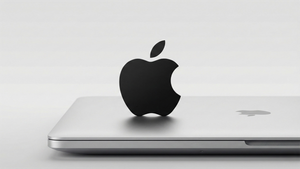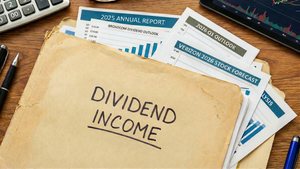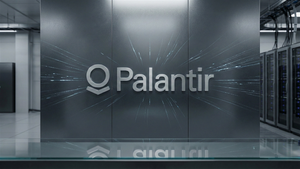
The global economic landscape is undergoing a profound transformation, driven by an unprecedented wave of technological advancements. Artificial intelligence (AI), automation, blockchain, and the Internet of Things (IoT) are not merely enhancing existing trade mechanisms; they are fundamentally redefining international commerce, supply chain structures, and the very fabric of economic policy. This digital revolution is creating both immense opportunities for efficiency and market access, while simultaneously posing complex challenges related to regulation, job markets, and geopolitical stability.
The immediate significance of these technological shifts is undeniable. They are forcing governments, businesses, and international organizations to rapidly adapt, update existing frameworks, and grapple with a future where data flows are as critical as cargo ships, and algorithms wield influence over market dynamics. As of late 2025, the world stands at a critical juncture, navigating the intricate interplay between innovation and governance in an increasingly interconnected global economy.
The Algorithmic Engine: Technical Deep Dive into Trade's Digital Transformation
At the heart of this transformation lies the sophisticated integration of AI and other emerging technologies into the operational sinews of global trade. These advancements offer capabilities far beyond traditional manual or static approaches, providing real-time insights, adaptive decision-making, and unprecedented transparency.
Artificial Intelligence (AI), with its machine learning algorithms, predictive analytics, natural language processing (NLP), and optical character recognition (OCR), is revolutionizing demand forecasting, route optimization, and risk management in supply chains. Unlike traditional methods that rely on historical data and human intuition, AI dynamically accounts for variables like traffic, weather, and port congestion, reducing logistics costs by an estimated 15% and stockouts by up to 50%. AI also powers digital trade platforms, identifying high-potential buyers and automating lead generation, offering a smarter alternative to time-consuming traditional sales methods. In data governance, AI streamlines compliance by monitoring regulations and analyzing shipping documents for discrepancies, minimizing costly errors. Experts like Emmanuelle Ganne of the World Trade Organization (WTO) highlight AI's adaptability and dynamic learning as a "general-purpose technology" reshaping sectors globally.
Automation, encompassing Robotic Process Automation (RPA) and intelligent automation, uses software robots and APIs to streamline repetitive, rule-based tasks. This includes automated warehousing, inventory monitoring, order tracking, and expedited customs clearance and invoice processing. Automation dramatically improves efficiency and reduces costs compared to manual processes, with DHL reporting over 80% of supply chain leaders planning to increase automation spending by 2027. Automated trading systems execute trades in milliseconds, process massive datasets, and operate without emotional bias, a stark contrast to slower, error-prone manual trading. In data governance, automation ensures consistent data handling, entry, and validation, minimizing human errors and operational risks across multiple jurisdictions.
Blockchain technology, a decentralized and immutable ledger, offers secure, transparent, and tamper-proof record-keeping. Its core technical capabilities, including cryptography and smart contracts (self-executing agreements coded in languages like Solidity or Rust), are transforming supply chain traceability and trade finance. Blockchain provides end-to-end visibility, allowing real-time tracking and authenticity verification of goods, moving away from insecure paper-based systems. Smart contracts automate procurement and payment settlements, triggering actions upon predefined conditions, drastically reducing transaction times from potentially 120 days to minutes. While promising to increase global trade by up to $1 trillion over the next decade (World Economic Forum), challenges include regulatory variations, integration with legacy systems, and scalability.
The Internet of Things (IoT) involves a network of interconnected physical devices—sensors, RFID tags, and GPS trackers—that collect and share real-time data. In supply chains, IoT sensors monitor conditions like temperature and humidity for perishable cargo, provide real-time tracking of goods and vehicles, and enable predictive maintenance. This continuous, automated monitoring offers unprecedented visibility, allowing for proactive risk management and adaptation to environmental factors, a significant improvement over manual tracking. IoT devices feed real-time data into trading platforms for enhanced market surveillance and fraud detection. In data governance, IoT automatically records critical data points, providing an auditable trail for compliance with industry standards and regulations, reducing manual paperwork and improving data quality.
Corporate Crossroads: Navigating the New Competitive Terrain
The integration of AI and emerging technologies is profoundly impacting companies across logistics, finance, manufacturing, and e-commerce, creating new market leaders and disrupting established players. Companies that embrace these solutions are gaining significant strategic advantages, while those that lag risk being left behind.
In logistics, companies like FedEx (NYSE: FDX) are leveraging AI for enhanced shipment visibility, optimized routes, and simplified customs clearance, leading to reduced transportation costs, improved delivery speeds, and lower carbon emissions. AI-driven robotics in warehouses are automating picking, sorting, and packing, while digital twins allow for scenario testing and proactive problem-solving. These efficiencies can reduce operational costs by 40-60%.
Trade finance is being revolutionized by AI and blockchain, addressing inefficiencies, manual tasks, and lack of transparency. Financial institutions such as HSBC (LSE: HSBA) are using AI to extract data from trade documents, improving transaction speed and safety, and reducing compliance risks. AI-powered platforms automate document verification, compliance checks, and risk assessments, potentially halving transaction times and achieving 90% document accuracy. Blockchain-enabled smart contracts automate payments and conditional releases, building trust among trading partners.
In manufacturing, AI optimizes production plans, enabling greater flexibility and responsiveness to global demand. AI-powered quality control systems, utilizing computer vision, inspect products with greater speed and accuracy, reducing costly returns in export markets. Mass customization, driven by AI, allows factories to produce personalized goods at scale, catering to diverse global consumer preferences. IoT and AI also enable predictive maintenance, ensuring equipment reliability and reducing costly downtime.
E-commerce giants like Amazon (NASDAQ: AMZN), Alibaba (NYSE: BABA), Shopify (NYSE: SHOP), and eBay (NASDAQ: EBAY) are at the forefront of deploying AI for personalized shopping experiences, dynamic pricing strategies, and enhanced customer service. AI-driven recommendations account for up to 31% of e-commerce revenues, while dynamic pricing can increase revenue by 2-5%. AI also empowers small businesses to navigate cross-border trade by providing data-driven insights into consumer trends and enabling targeted marketing strategies.
Major tech giants, with their vast data resources and infrastructure, hold a significant advantage in the AI race, often integrating startup innovations into their platforms. However, agile AI startups can disrupt existing industries by focusing on unique value propositions and novel AI applications, though they face immense challenges in competing with the giants' resources. The automation of services, disruption of traditional trade finance, and transformation of warehousing and transportation are all potential outcomes, creating a need for continuous adaptation across industries.
A New Global Order: Broader Implications and Looming Concerns
The widespread integration of technology into global trade extends far beyond corporate balance sheets, touching upon profound economic, social, and political implications, reshaping the broader AI landscape and challenging existing international norms.
In the broader AI landscape, these advancements signify a deep integration of AI into global value chains, moving beyond theoretical applications to practical, impactful deployments. AI, alongside blockchain, IoT, and 5G, is becoming the operational backbone of modern commerce, driving trends like hyper-personalized trade, predictive logistics, and automated compliance. The economic impact is substantial, with AI alone estimated to raise global GDP by 7% over 10 years, primarily through productivity gains and reduced trade costs. It fosters new business models, enhances competitiveness through dynamic pricing, and drives growth in intangible assets like R&D and intellectual property.
However, this progress is not without significant concerns. The potential for job displacement due to automation and AI is a major social challenge, with up to 40% of global jobs potentially impacted. This necessitates proactive labor policies, including massive investments in reskilling, upskilling, and workforce adaptation to ensure AI creates new opportunities rather than just eliminating old ones. The digital divide—unequal access to digital infrastructure, skills, and the benefits of technology—threatens to exacerbate existing inequalities between developed and developing nations, concentrating AI infrastructure and expertise in a few economies and leaving many underrepresented in global AI governance.
Politically, the rapid pace of technological change is outpacing the development of international trade rules, leading to regulatory fragmentation. Different domestic regulations on AI across countries risk hindering international trade and creating legal complexities. There is an urgent need for a global policy architecture to reconcile trade and AI, updating frameworks like those of the WTO to address data privacy, cybersecurity, intellectual property rights for AI-generated works, and the scope of subsidy rules for AI services. Geopolitical implications are also intensifying, with a global competition for technological leadership in AI, semiconductors, and 5G leading to "technological decoupling" and export controls, as nations seek independent capabilities and supply chain resilience through strategies like "friendshoring."
Historically, technological breakthroughs have consistently reshaped global trade, from the domestication of the Bactrian camel facilitating the Silk Road to the invention of the shipping container. The internet and e-commerce, in particular, democratized international commerce in the late 20th century. AI, however, represents a new frontier. Its unique ability to automate complex cognitive tasks, provide predictive analytics, and enable intelligent decision-making across entire value chains distinguishes it. While it will generate economic growth, it will also lead to labor market disruptions and calls for new protectionist policies, mirroring patterns seen with previous industrial revolutions.
The Horizon Ahead: Anticipating Future Developments
The trajectory of technological advancements in global trade points towards a future of hyper-efficiency, deeper integration, and continuous adaptation. Both near-term and long-term developments are poised to reshape how nations and businesses interact on the global stage.
In the near term, we will witness the continued maturation of digital trade agreements, with countries actively updating laws to accommodate AI-driven transactions and cross-border data flows. AI will become even more embedded in optimizing supply chain management, enhancing regulatory compliance, and facilitating real-time communication across diverse global markets. Blockchain technology, though still in early adoption stages, will gain further traction for secure and transparent record-keeping, laying the groundwork for more widespread use of smart contracts in trade finance and logistics.
Looking towards the long term, potentially by 2040, the WTO predicts AI could boost global trade by nearly 40% and global GDP by 12-13%, primarily through productivity gains and reduced trade costs. AI is expected to revolutionize various industries, potentially automating aspects of trade negotiations and compliance monitoring, making these processes more efficient and less prone to human error. The full potential of blockchain, including self-executing smart contracts, will likely be realized, transforming cross-border transactions by significantly reducing fraud, increasing transparency, and enhancing trust. Furthermore, advancements in robotics, virtual reality, and 3D printing are anticipated to become integral to trade, potentially leading to more localized production, reduced reliance on distant supply chains, and greater resilience against disruptions.
However, realizing this potential hinges on addressing critical challenges. Regulatory fragmentation remains a significant hurdle, as diverse national policies on AI and data privacy risk hindering international trade. There is an urgent need for harmonized global AI governance frameworks. Job displacement due to automation necessitates robust retraining programs and support for affected workforces. Cybersecurity threats will intensify with increased digital integration, demanding sophisticated defenses and international cooperation. The digital divide must be actively bridged through investments in infrastructure and digital literacy, especially in low and middle-income nations, to ensure equitable participation in the digital economy. Concerns over data governance, privacy, and intellectual property theft will also require evolving legal and ethical standards across borders.
Experts predict a future where policy architecture must rapidly evolve to reconcile trade and AI, moving beyond the "glacial pace" of traditional multilateral policymaking. There will be a strong emphasis on investment in AI infrastructure and workforce skills to ensure long-term growth and resilience. A collaborative approach among businesses, policymakers, and international organizations will be essential for maximizing AI's benefits, establishing robust data infrastructures, and developing clear ethical frameworks. Digital trade agreements are expected to become increasingly prevalent, modernizing trade laws to facilitate e-commerce and AI-driven transactions, aiming to reduce barriers and compliance costs for businesses accessing international markets.
The Unfolding Narrative: A Comprehensive Wrap-Up
The ongoing technological revolution, spearheaded by AI, marks a pivotal moment in the history of global trade and economic policy. It is a narrative of profound transformation, characterized by ubiquitous digitalization, unprecedented efficiencies, and the empowerment of businesses of all sizes, particularly SMEs, through expanded market access. AI acts as a force multiplier, fundamentally enhancing decision-making, forecasting, and operational efficiency across global value chains, with the WTO projecting a near 40% boost to global trade by 2040.
The overall significance of these developments in the context of AI history and global trade evolution cannot be overstated. Much like containerization and the internet reshaped commerce in previous eras, AI is driving the next wave of globalization, often termed "TradeTech." Its unique ability to automate complex cognitive tasks, provide predictive analytics, and enable real-time intelligence positions it as a critical driver for a more interconnected, transparent, and resilient global trading system. However, this transformative power also brings fundamental questions about labor markets, social equity, data sovereignty, and the future of national competitiveness.
Looking ahead, the long-term impact will likely be defined by hyper-efficiency and deepened interconnectedness, alongside significant structural adjustments. We can anticipate a reconfiguration of global value chains, potentially leading to some reshoring of production as AI and advanced manufacturing reduce the decisive role of labor costs. The workforce will undergo continuous transformation, demanding persistent investment in upskilling and reskilling. Geopolitical competition for technological supremacy will intensify, influencing trade policies and potentially leading to technology-aligned trade blocs. The persistent digital divide remains a critical challenge, requiring concerted international efforts to ensure the benefits of AI in trade are broadly shared. Trade policies will need to become more agile and anticipatory, integrating ethical considerations, data privacy, and intellectual property rights into international frameworks.
In the coming weeks and months, observers should closely watch the evolving landscape of AI policies across major trading blocs like the US, EU, and China. The emergence of divergent regulations on data privacy, AI ethics, and cross-border data flows could create significant hurdles for international trade, making efforts towards international standards from organizations like the OECD and UNESCO particularly crucial. Pay attention to trade measures—tariffs, export controls, and subsidies—related to critical AI components, such as advanced semiconductors, as these will reflect ongoing geopolitical tensions. Shifts in e-commerce policy, particularly regarding "de minimis" thresholds and compliance requirements, will directly impact cross-border sellers. Finally, observe investments in digital infrastructure, green trade initiatives, and the further integration of AI in trade finance and customs, as these will be key indicators of progress towards a more technologically advanced and interconnected global trading system.
This content is intended for informational purposes only and represents analysis of current AI developments.
TokenRing AI delivers enterprise-grade solutions for multi-agent AI workflow orchestration, AI-powered development tools, and seamless remote collaboration platforms.
For more information, visit https://www.tokenring.ai/.






